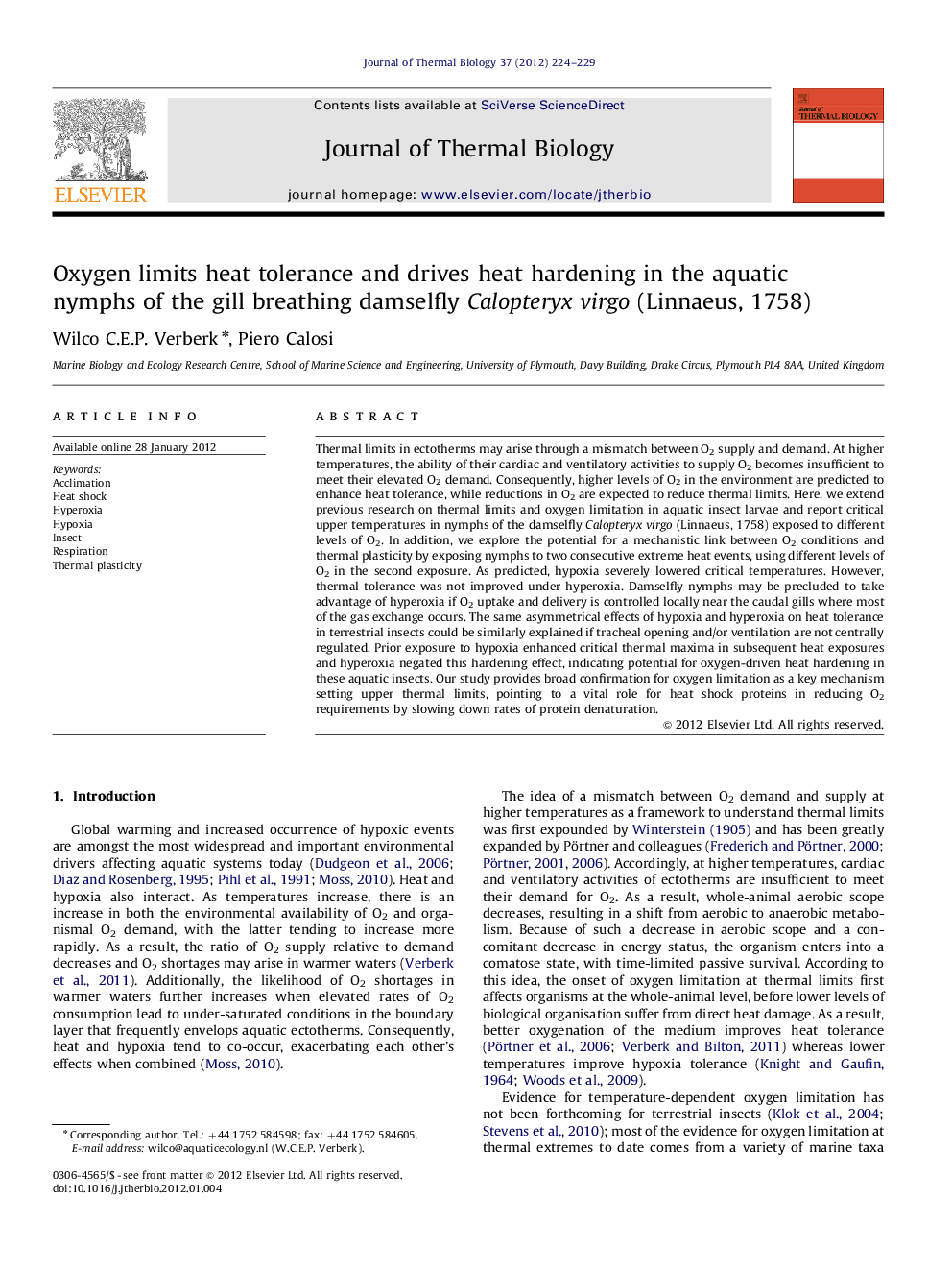| کد مقاله | کد نشریه | سال انتشار | مقاله انگلیسی | نسخه تمام متن |
|---|---|---|---|---|
| 2843373 | 1166090 | 2012 | 6 صفحه PDF | دانلود رایگان |

Thermal limits in ectotherms may arise through a mismatch between O2 supply and demand. At higher temperatures, the ability of their cardiac and ventilatory activities to supply O2 becomes insufficient to meet their elevated O2 demand. Consequently, higher levels of O2 in the environment are predicted to enhance heat tolerance, while reductions in O2 are expected to reduce thermal limits. Here, we extend previous research on thermal limits and oxygen limitation in aquatic insect larvae and report critical upper temperatures in nymphs of the damselfly Calopteryx virgo (Linnaeus, 1758) exposed to different levels of O2. In addition, we explore the potential for a mechanistic link between O2 conditions and thermal plasticity by exposing nymphs to two consecutive extreme heat events, using different levels of O2 in the second exposure. As predicted, hypoxia severely lowered critical temperatures. However, thermal tolerance was not improved under hyperoxia. Damselfly nymphs may be precluded to take advantage of hyperoxia if O2 uptake and delivery is controlled locally near the caudal gills where most of the gas exchange occurs. The same asymmetrical effects of hypoxia and hyperoxia on heat tolerance in terrestrial insects could be similarly explained if tracheal opening and/or ventilation are not centrally regulated. Prior exposure to hypoxia enhanced critical thermal maxima in subsequent heat exposures and hyperoxia negated this hardening effect, indicating potential for oxygen-driven heat hardening in these aquatic insects. Our study provides broad confirmation for oxygen limitation as a key mechanism setting upper thermal limits, pointing to a vital role for heat shock proteins in reducing O2 requirements by slowing down rates of protein denaturation.
Graphical AbstractFigure optionsDownload as PowerPoint slideResearch highlights
► Thermal limits may arise through a mismatch between O2 supply and demand.
► We report O2 effects on thermal maxima (CTmax) in aquatic nymphs of a damselfly.
► Hypoxia lowered CTmax but hyperoxia did not increase them.
► Hypoxia elicited a protective response, increasing CTmax in following heat exposures.
► O2 may driver heat hardening in these aquatic insects.
Journal: Journal of Thermal Biology - Volume 37, Issue 3, April 2012, Pages 224–229